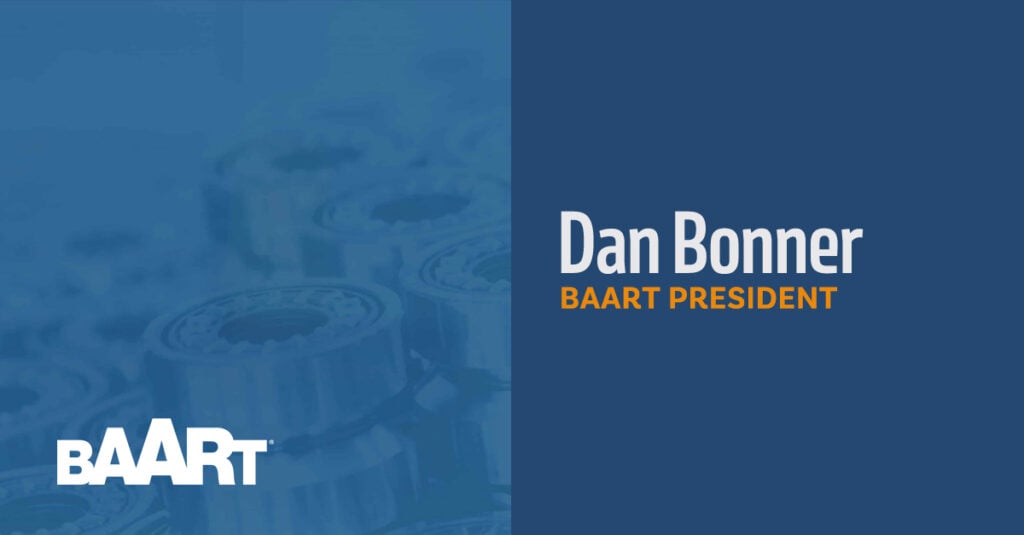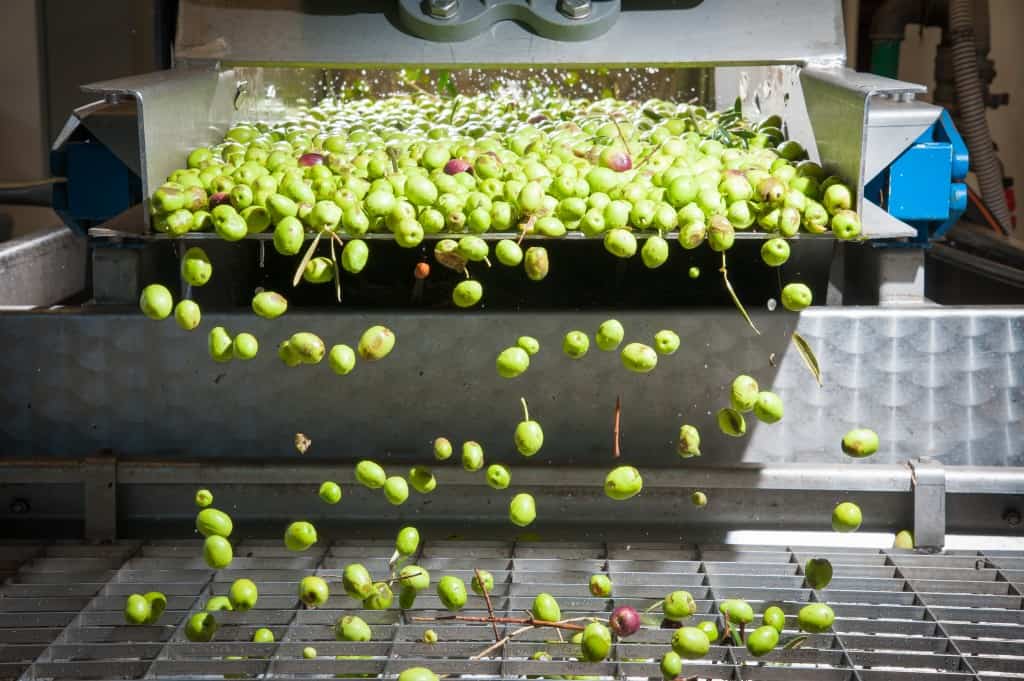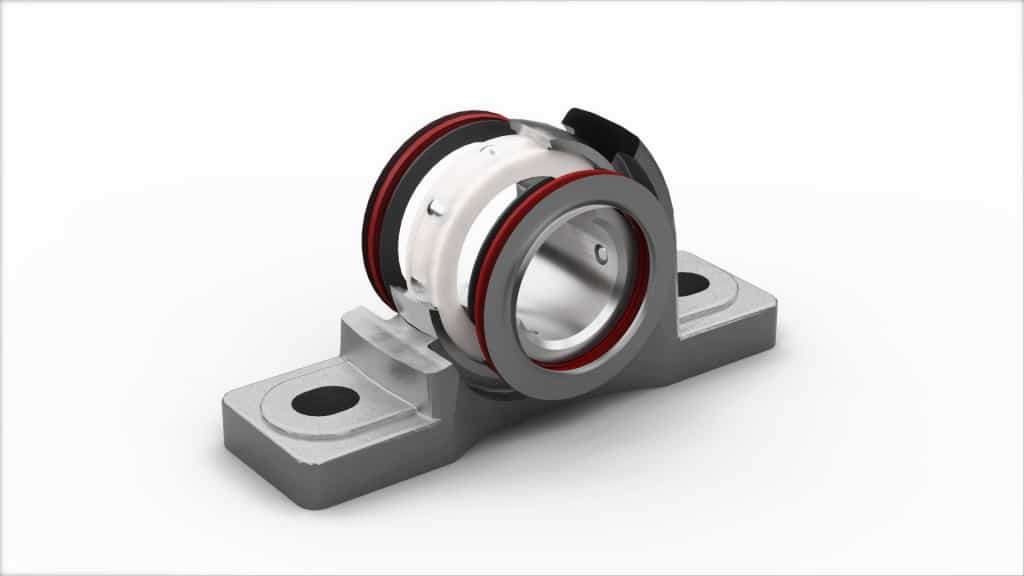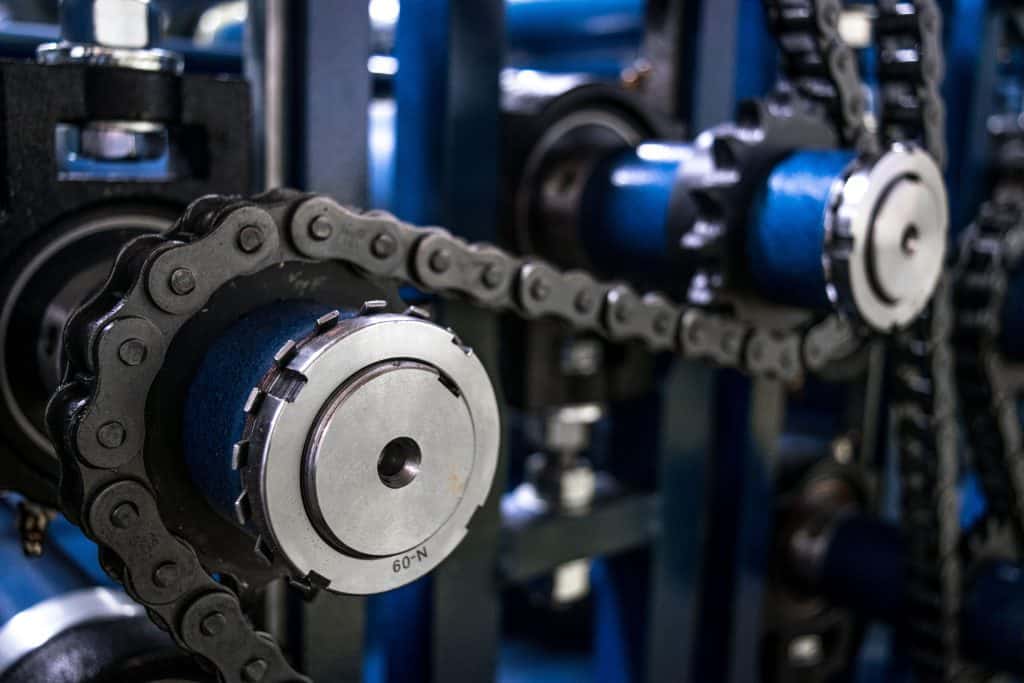Replace Unsightly Remote Grease Lines With Solid Lube

When bearings are operating with ideal lubrication, maintenance of an application will never seem more straightforward. Apply a little grease at specified intervals and move on to the next project. These easy times never seem long-lived, though. That’s partly because nearly 80% of premature bearing failures are lubrication-related, remote grease lines or not. With numbers this high, it’s reasonable to assume you’ve experienced the frustrations of one of these unintended failures.
Several popular bearing lubrication methods intend to make greasing bearings easier, faster, or more efficient. Remote lubrication systems are often chosen for large operations because they centralize lubrication away from the application and reduce lubrication points to a single, easily accessed one.
While remote lubrication can simplify the process for maintenance technicians, the remote grease lines create complications that are hard to envision before implementation. We’ll cover what these are, why they may not be ideal for your operation’s long-term health, and why solid lubrication might be a better choice.
Remote grease lines and cleanliness
Cleanliness is a critical element of food processing. For instance, without proper safety measures, food processors may be making unsafe products or will have extreme difficulty passing inspections. Manually greasing bearings is an imprecise process. It is the lubrication method most likely to over-lubricate a bearing. With bearings often very close to food production, the likelihood of product contamination is high.
Remote lubrication systems attempt to mitigate these risks. These systems intend to administer grease quantities away from products. In theory, this is a great feature. In practice, you’ve now included multiples times the number of components that can become damaged or degraded.
Each fitting and connection is an additional weakness added to the lubrication system. High-pressure washdowns, a thorough and non-negotiable way of cleaning applications, can jeopardize these lines and fittings, requiring stoppages for repairs. If gone unnoticed, bearings may fail due to under-lubrication.
Bearing guards, necessary for protecting nearby personnel from high-speed equipment, add another wrinkle to food-grade applications. These guards have two unintended consequences: washdowns become less efficient, making it difficult to clean the bearings and anything located within the guards; they also reduce the visibility of those lubrication components.
Operators need to be able to determine the health of bearings quickly. Are they leaking at all? Have the seals been compromised? The same goes for the lubrication lines. It’s not unreasonable to expect the area within the guards to be less clean than their surroundings. This can have a detrimental impact on overall cleanliness.
Grease lines and the unknowns
A lubrication system’s ability to control the greasing process precisely is a strong selling point, but the reality is slightly different. To be certain that the quantities delivered to bearings are accurate, additional components are required, such as meters or sensors. These components accurately measure the amount of lubricant that is delivered to bearings.
Remote grease lines make even distribution of lubrication across multiple bearings difficult. There are several reasons for this:
Varying lengths of lube lines
How advanced a central lubrication system is will affect how well it greases bearings. For many, some lines will be longer than others. If bearings share a single lubrication point, grease will look for the path of least resistance. Shorter lines will lead to those bearings receiving more grease than bearings attached to longer lines, however slight the variance may be. This translates to over and under-greasing of bearings within the same application.
More advanced systems can use meters or sensors to individually grease bearings. These are more efficient but require more components, both increasing costs and the difficulty of use.
Longer lines and older grease
When greasing a bearing, you’re dealing with small amounts applied at predetermined intervals. Remote grease lines can be quite long, depending on the distance from the system to the bearing. The immediate downside to this is the quality of the grease within the line. The newly applied grease isn’t the grease entering the bearing. The grease that will be lubricating the bearing may be from the last application, or two applications ago, possibly even further back. This means that the one ingredient that protects the bearing will be of compromised quality.

The cost of lubrication systems
Lubrication systems can vary widely in their initial cost. What isn’t clear? The continual cost for additional components and replacements. Grease itself is an ongoing expense. Stainless steel lines are exceptionally costly. With the upkeep required for these systems, the price tag can exceed solid lubricated bearings or is otherwise difficult to determine.
A food-safe problem
The variance in grease quantities, coupled with bearing guards reducing visibility, makes it difficult to tell if bearings are appropriately greased. Over and under-lubrication are direct paths to bearing failure. In food-safe applications, over-greasing is more problematic.
When a bearing is over-greased, the most common occurrence is a blown bearing seal. This not only sends grease onto the surrounding areas but opens a pathway for contaminant ingress. A blown seal will necessitate continuous over-greasing to purge harmful particles. In clean applications, this is not an option, as contaminated product is a worst-case-scenario. So bearings must be replaced, causing stoppages.
Is there a better bearing lubrication type?
Typical lubrication solutions apply grease from the outside. Solid lubrication reverses that formula: an oil-saturated polymer containing all the lubricant a bearing will need throughout its lifetime. Solid lubrication can contain as much as four times the base oil that a standard greased bearing would. This is an excellent indication of long-term viability.
Using a bearing containing its lubricant eliminates the centralized lube system and all the components necessary for its functionality. There are no components to damage and no more lines or fittings threatening to leak. You can rely on solid lubrication to always provide oil at the right time and in the right quantities without interruption.
Bearings with solid lubrication perform exceptionally well in washdown applications. These lubricants lend strength to bearing seals from within, reducing the likelihood of unseating or caving. Solid lubrication also reduces the risk of failure due to the washout of oil and ingress of contaminants. The result is a more thorough and efficient washdown performed without worry. Better washdowns translate to cleaner applications.
Solid lubrication goes further than any other bearing lubrication type in reducing problematic variables. Consistency is a valuable feature that has long-term benefits.

In an attempt to simplify lubrication, making other processes more difficult or problematic is something to be aware of.
It’s important to remember what your goals are when designing and implementing a lubrication solution. Does solid lubrication check off all your requirements? If not, are there improvements over the others? Weigh costs and benefits, explore every option, and seek advice from experts. Often the simple solution ends up becoming the best.
Interested in discovering what other benefits solid lubrication can provide? Explore more here.

- Save money while protecting your reputation for quality.
- Reduce warranty claims with fool-proof lubrication.
- Use lubrication to improve more than bearing life.




